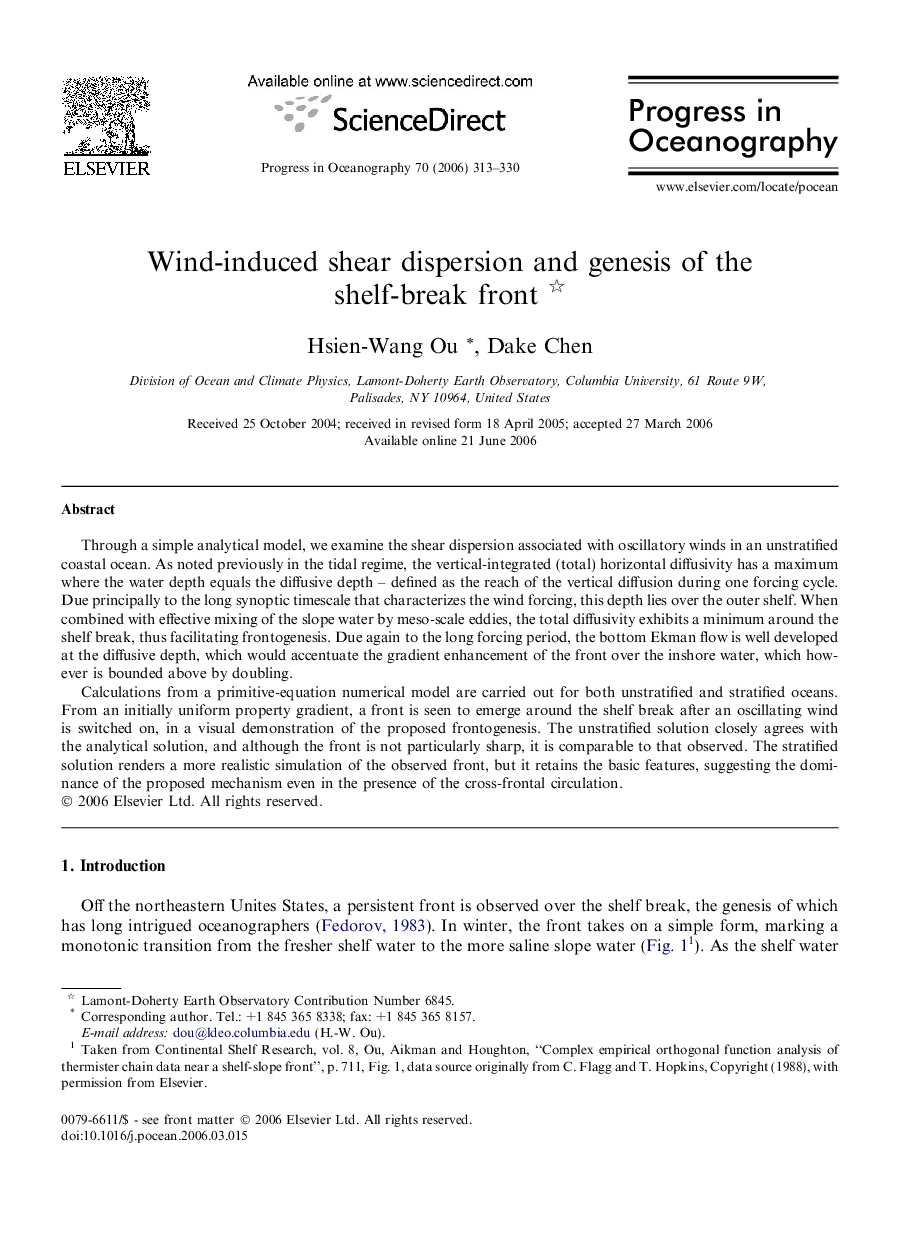| Article ID | Journal | Published Year | Pages | File Type |
|---|---|---|---|---|
| 4553953 | Progress in Oceanography | 2006 | 18 Pages |
Through a simple analytical model, we examine the shear dispersion associated with oscillatory winds in an unstratified coastal ocean. As noted previously in the tidal regime, the vertical-integrated (total) horizontal diffusivity has a maximum where the water depth equals the diffusive depth – defined as the reach of the vertical diffusion during one forcing cycle. Due principally to the long synoptic timescale that characterizes the wind forcing, this depth lies over the outer shelf. When combined with effective mixing of the slope water by meso-scale eddies, the total diffusivity exhibits a minimum around the shelf break, thus facilitating frontogenesis. Due again to the long forcing period, the bottom Ekman flow is well developed at the diffusive depth, which would accentuate the gradient enhancement of the front over the inshore water, which however is bounded above by doubling.Calculations from a primitive-equation numerical model are carried out for both unstratified and stratified oceans. From an initially uniform property gradient, a front is seen to emerge around the shelf break after an oscillating wind is switched on, in a visual demonstration of the proposed frontogenesis. The unstratified solution closely agrees with the analytical solution, and although the front is not particularly sharp, it is comparable to that observed. The stratified solution renders a more realistic simulation of the observed front, but it retains the basic features, suggesting the dominance of the proposed mechanism even in the presence of the cross-frontal circulation.
